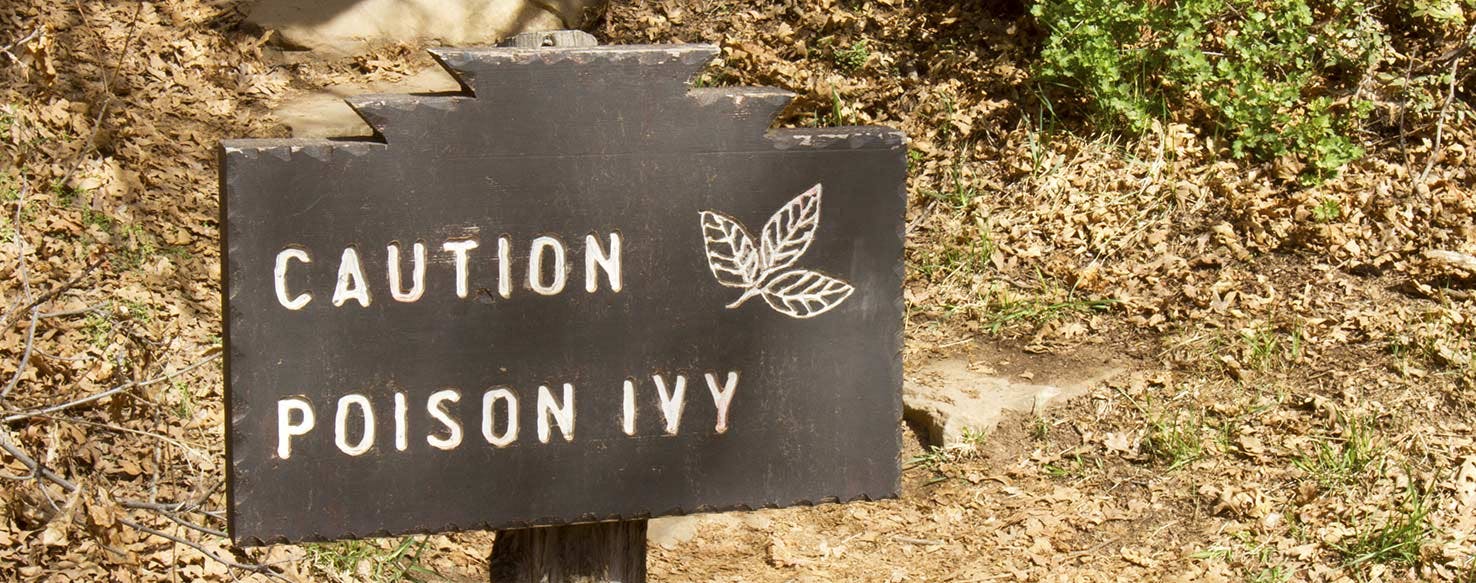Poison ivy is a pesky plant whose name sounds dangerous, and its effects can be toxic. Native to North America, poison ivy can be found in a variety of environments, but most often in wetlands, forests, streams, fields, roadsides, and backyards. It grows in clusters and is widely recognized by its groups of three leaves. The irritation and rash that poison ivy causes are the fault of its sap, which contains urushiol oil.
This plant can make life miserable for a person who touches it, but does it have the same effect on dogs? Do dogs suffer from the same intense itching and rash as people who are exposed to poison ivy?
Can Dogs Get Poison Ivy?
YES!
Dogs can contract poison ivy, although, with the exception of very rare cases, they are unlikely to suffer as much or contract it as easily as people do. Because of their long hair and fur coats, it is harder for the sap to make contact with a dog’s skin. But if a dog does come into direct contact with poison ivy, it can result in topical and internal discomfort.
Does My Dog Have Poison ivy?
If you’ve recently taken your dog hiking or to a local park, or if you live in an area where your dog can roll in plant matter, gardens, and weeds, then there’s a higher chance that they might have poison ivy. Look for these common symptoms in your dog:
In extreme cases, a dog may go into anaphylactic shock, resulting in seizures.
Poison ivy causes raised, red bumps on a dog’s skin. These bumps closely resemble pimples, and they are part of the body’s reaction to the urushiol oil on the plant. The dog’s local histamine is then released, prompting the affected area to become extremely itchy; it also increases blood flow to this location. As the symptoms become more chronic, the bumps may start to blister and ooze. The skin is susceptible to bacterial infections; the body reacts by releasing even more histamine, and the result is one miserable and itchy dog.
Your dog’s level of discomfort is directly tied to how quickly the condition is treated; the longer it goes untreated, the more uncomfortable it becomes for your pup.
If your dog ingests poison ivy, it can cause a severe
gastrointestinal upset, including diarrhea, vomiting, appetite loss.
The most likely places to find poison ivy on a dog are in the areas that contain less and shorter hair, such as the groin.
How Do I Treat My Dog’s Poison Ivy?
If your dog has come in contact with or eaten poison ivy, contact your veterinarian right away. Then, get your dog into the bathtub and bathe them with a warm, oatmeal-based solution. Make sure that you put gloves and protective clothing on so you don’t contract poison ivy either. Rinse your dog to remove all shampoo from the fur, then bathe your dog for a second time in warm water and oatmeal shampoo. Finally, rinse your dog thoroughly one last time.
Make sure that all towels and any other items that your dog may have touched are washed immediately. Check with your veterinarian to see what antihistamines --- like Benadryl --- you can give to your dog to help alleviate this itchiness.
How Is Poison Ivy Similar in Dogs and Humans?
The main similarity in poison ivy’s impact on people and dogs is in the sap’s symptoms. The urushiol oil causes similar reactions in individuals and dogs, including raised, red, swollen bumps on the skin, followed by intense itching and sores that can become pus-filled and crusted.
Oatmeal baths and antihistamines are methods that can be used by both people and dogs to calm the symptoms of poison ivy.
How Is Poison Ivy Different in Dogs and Humans?
One of the primary differences between poison ivy in dogs as opposed to in humans is that is rarer for dogs to develop it. Breeds with longer hair or thicker coats have skin that is better protected from exposure to the plant’s sap. The exception here would be short-coated and hairless breeds who are more likely to contract it.
Because people have skin that is exposed, it is much easier for the sap to make direct contact with the skin.
Case Study
A dog shows signs of excessive itching, and has multiple red, raised bumps on his skin. He is also suffering from stomach upset. The veterinarian diagnoses the dog as having come in contact with poison ivy and ingested some of it.
After the diagnosis, the veterinary technicians bathe the dog with an oatmeal-based shampoo and administer an oral antihistamine to calm the symptoms down. Within 5 to 7 days, the irritation has passed, and the dog is acting normally.

